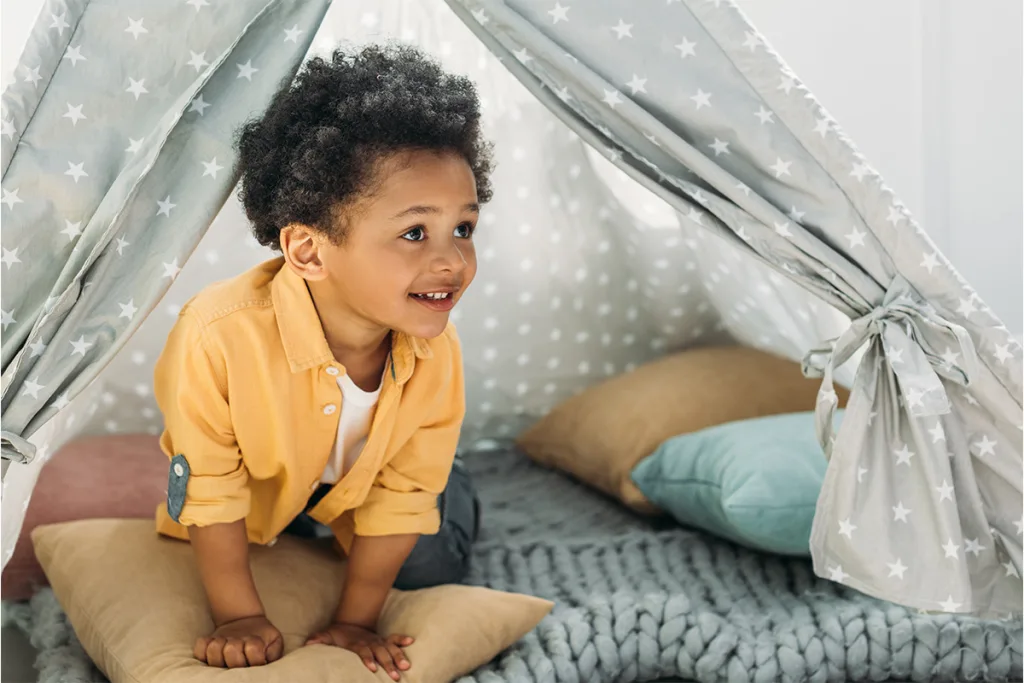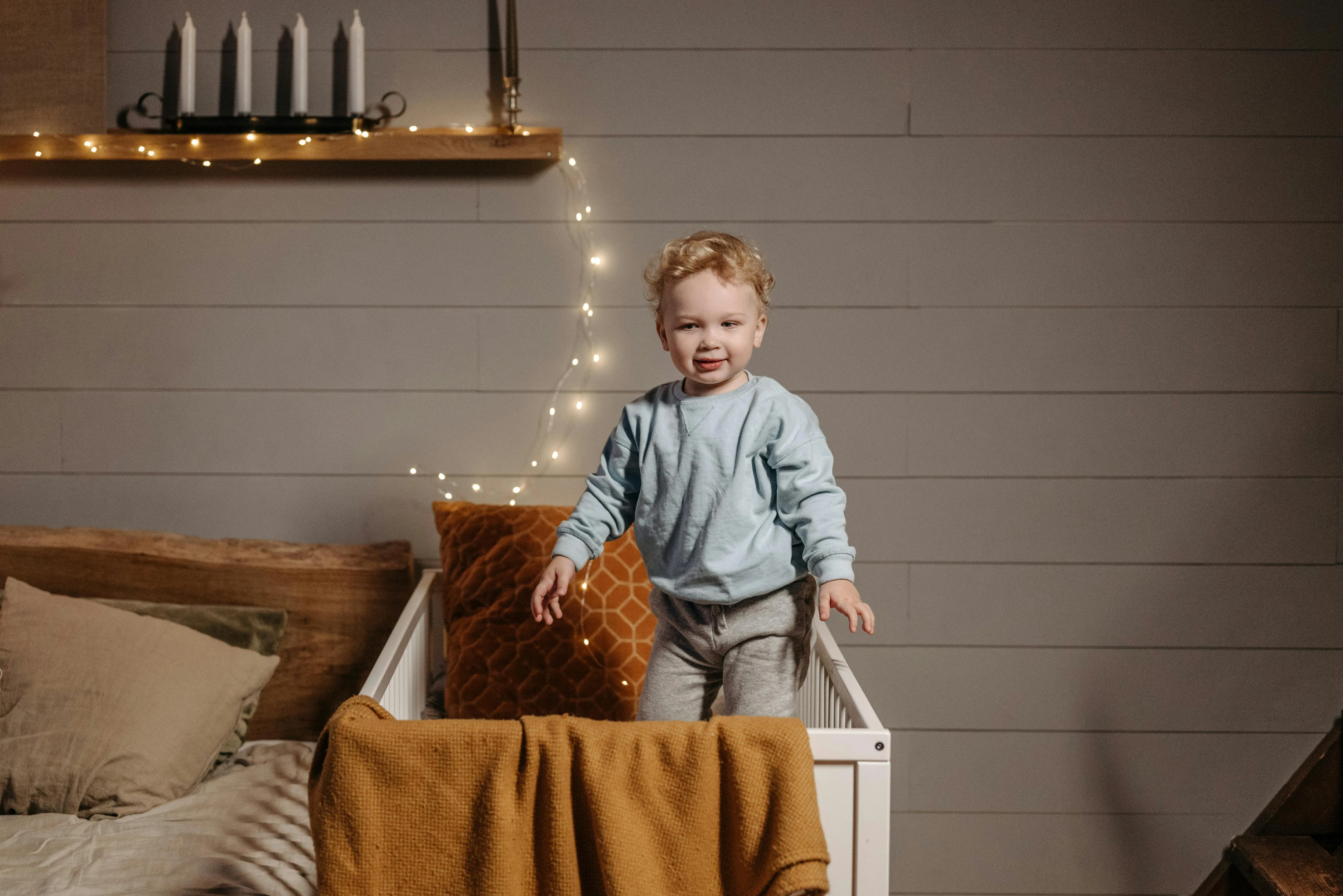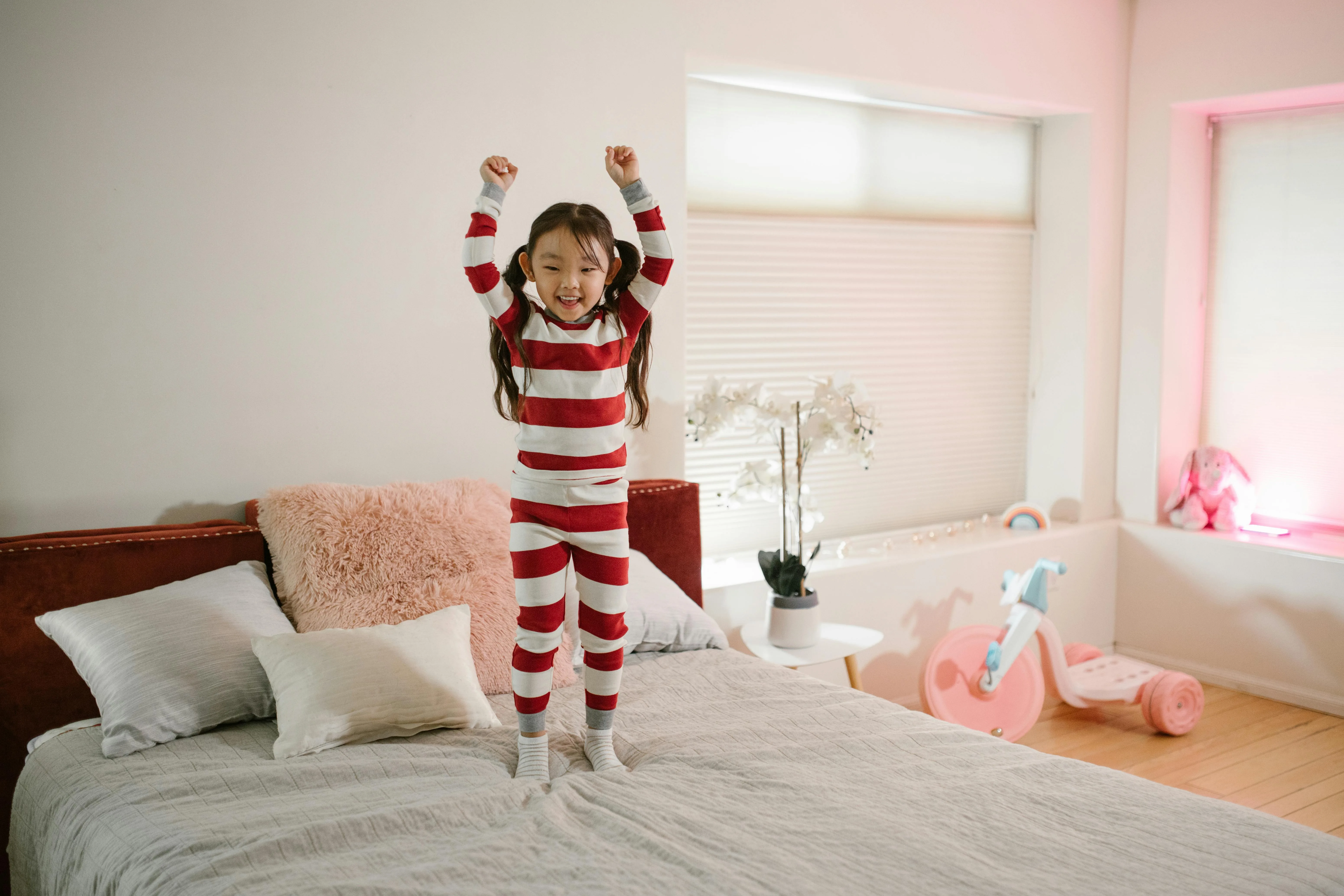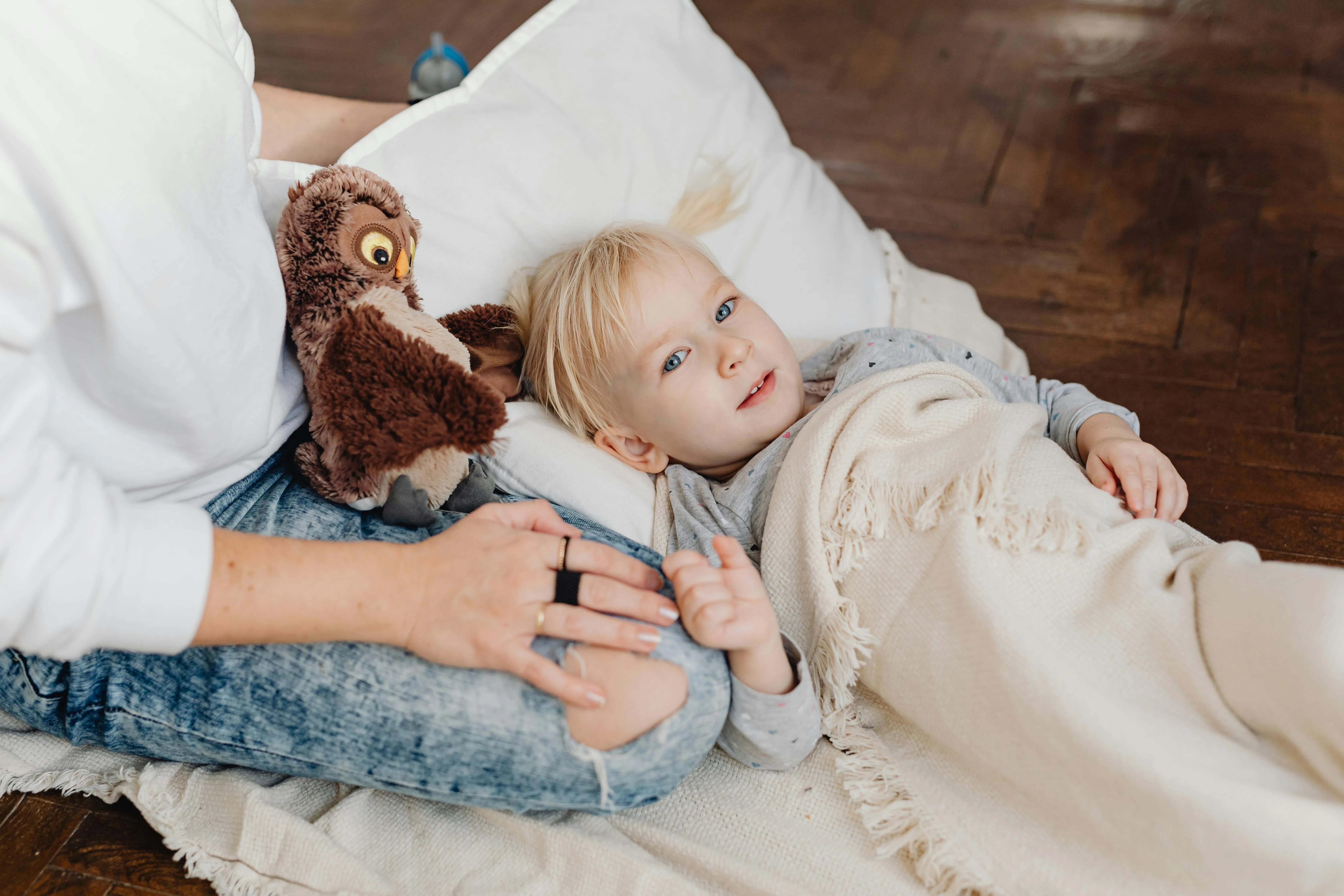The transition from crib to bed is a major milestone. It’s that first step towards independence for your child, which is exciting but can also naturally come with anxieties (for both kids and parents). While you might wish you could snap your fingers and your kid would be used to their bed, that’s rarely how it goes. This change is a process, and like with every part of raising a child, a little extra help goes a long way.
An Au Pair can provide additional support and comfort during this time, filling in the gaps when parents aren’t available and helping to implement new bedtime rules. In this blog, we’ll cover when to move to a toddler bed and how to make the transition go as smoothly as possible.
When to Transition to Toddler Beds
There’s no exact science around when it’s time to move your little peanut from their crib to a bed. However, there is plenty of data on the best average age range, as well as simple signs it’s time to make the switch.
Typical Toddler Bed Age Range
Parenting experts recommend introducing this change somewhere between the 18-month and 3-year mark. We know that’s a big range, and that’s because every child and every household is different. Here are some factors that might influence when you decide to make the change:
- Growing your family: If you have another baby on the way, you might not want to have two cribs in the home. So, you might decide to transition your toddler to a bed sooner rather than later to free up their crib for the next addition to your family.
- Your child’s maturity: It’s important that your child is able to understand — and follow — rules before they get the independence that a bed brings. This emotional maturity shows up early for some kids, while others need more time.
- Your toddler’s size/capabilities: As a general rule, when a toddler is able to hoist themselves out of their crib, it’s time to make the change to a bed. Not all toddlers grow at the same speed, though. Some sprout up early, while others develop more slowly.
Studies have shown that the transition tends to go more smoothly the longer you wait. Ultimately, it’s up to you to determine the best time to make this change. Some of it comes down to monitoring nighttime behaviors. If you are away during the evenings, ask your Au Pair to monitor your little one and write down what they observe.
How to Know When to Switch to a Toddler Bed from a Crib
Every family is unique. So, knowing when to switch to a toddler bed is all about watching your kid’s habits and developmental cues. Here are some signs it’s time to make the switch:
- Physical size of a child: Once your child has grown to 35 inches (roughly three feet tall), it’s a good idea to make the switch to a big-kid bed. If they are any taller, they are at risk of falling out of their crib.
- The chest level test: Height isn’t the only measurement to go by since everyone develops differently. If the crib rail sits at the middle of your child’s chest when they’re standing up, they’re too tall to remain in a crib.
- Climbing out of the crib: This is a tell-tale sign that your kid has outgrown their crib. Remember that the drop from the top of a crib is higher than the drop from the side of a bed. So, if your child is exhibiting this behavior, they’re safest in a toddler bed.
- Asking for a big-kid bed: Has your child started asking for a big-kid bed? That alone isn’t a reason to make the transition. But, it’s a good time to start talking about the new rules and routines that will come with a bed and prepare them for the change.
- Potty training at night: Potty training soon? Consider getting your toddler comfortable in their bed before you start. This will ensure they’re prepared to get up and use the potty during the night. Plus, you don’t want to introduce too many changes at once, so handle the new sleeping place change first, then potty training.
There’s no one-size-fits-all approach. Monitor your child’s growth and behaviors, and you’ll know when the time is right.
Choosing the Right Toddler Bed
If you’ve decided your munchkin is ready to make the transition from a crib to a bed, picking out the right bed can help ease the shift. Here are some things to consider when shopping for a bed.
Safety Considerations
Safety is, of course, always your top priority as a parent. So, make sure the new bed is:
- Well built: Choose a sturdy frame that won’t break, even under a toddler jumping on it
- Has guard rails: These prevent kids from rolling off the bed onto the floor or getting stuck between the bed and the wall.
- Low to the ground: This will reduce the risk of injury if your kid rolls out of bed.
- Gap-free: You don’t want any gaps between the mattress and the frame, as children can get stuck there. Finding a mattress that fits firmly in the frame can help with that.
- Non-toxic: Choose a bed made with organic, sustainable materials for your sweet pea’s health. Solid wood and water-based finishes are a great start. Avoid BPA, lead, phthalates, formaldehyde, and volatile organic compounds.
While not an official “safety” feature, make sure your kid loves their bed! That will reduce the chances they try to escape, which brings us to our next tip.
Let Your Toddler Help Choose
Involve your toddler in the process of picking out a bed to boost their sense of independence. It can help them get excited about the change and take a sense of ownership in it. Select a few appropriate choices that are safe and well-built, and let your child decide which one they want. You can also let them choose the sheets, comforter, and other elements of their bed.
Transition Options
If your crib can be converted to a bed, you might be deciding between going that route or picking out a whole new toddler bed. There are pros and cons to both. A crib-to-bed conversion has these benefits:
- Saving money: Converting a crib to a bed usually costs less than buying a whole new toddler bed
- Familiarity: Your growing kid can keep sleeping in a familiar setting, which could help the transition go smoothly
- Space saving: A crib-to-bed conversion might take up less space than a toddler bed
Just keep in mind that, depending on the size of the crib, your child might outgrow it quickly — even after you’ve converted it to a bed. So you could find yourself buying a new toddler bed either way.
Some parents prefer buying a new bed immediately for the following reasons:
- Child demand: If your toddler has been asking for a new bed, then fulfilling that request could help them become excited, rather than anxious, about this new phase
- Child size: If your child is already too big for their crib, then a crib-to-conversion will probably be too small, too.
- Incoming baby: If you need your crib for a new addition to the family, then you’ll likely be buying a bed for your toddler.
Think about your budget, the size of your child’s room, and the size of your child to determine your best option when transitioning.
Preparing Your Toddler for the Crib-to-Toddler Bed Transition
We know this is a major change for everyone. We promise that, with a little patience and a lot of love, you’ll be able to support your kid through this transition. Before you know it, they’ll look forward to sleeping in their bed. Here’s how to transition to a toddler bed.
Talking to Your Child
Kids need time to adjust to ideas, so don’t spring the toddler bed on them. Start having conversations with your child about what’s to come. Explain that they’re becoming a big kid now, and big kids sleep in beds. Tell them that you’re proud of them for being ready to make the change and that they can ask you any questions they might have about their new sleeping arrangements. Also, set expectations about what the change means. For example, if your child wakes up before you do in the morning, should they come get you? Or wait for you to come to their room?
Gradual Approach
It’s best if the first time your toddler sleeps in their new bed isn’t during the night. That sudden change could make them uneasy. Instead, maybe have them take some naps in their bed at first. This gives them a chance to get comfortable with their new bed. Plus, it lets you monitor their behaviors while you’re up and about. You could also encourage them to do enjoyable things in their bed, like play or have storytime. This can help them build positive associations with their new sleeping spot.
Consistent Bedtime Routine
The actual bed should be the only thing that changes about sleep. Keep the nighttime routine the same as it was with the crib. So whether that involves taking an evening bath, having story time, or scratching your child’s back as they doze off, keep up with the usual pre-bed regimen. Remember, these activities signal that it’s time to go to sleep soon — and they’re especially important when your toddler is getting used to a new sleeping environment.
Patience and Consistency
Every child adjusts to their bed at a different rate. Some get used to it within a week or two, while others need several months. So be patient, and know that a learning curve is to be expected. The important thing is to remain consistent. It might be tempting to let your child climb into your bed or return to their crib, but doing so will only make the change harder when you try again.
Keep Exploration to a Minimum
Plan this change when there isn’t much else happening in the home. Kids can’t handle too many changes at once. So, make sure the bed is the only new thing in your child’s life for now. Trying to make the shift when your kid is attending a new daycare, settling into a new home, or learning to potty train will overwhelm them.
Don’t Rush the Transition
Unless you need to free up the crib for an incoming baby, don’t rush this change. So long as your tot can still safely sleep in their crib, there’s no need to hurry the process. If it feels too abrupt, your child will be more likely to push back and struggle to get settled. So start with those early conversations about the change. Encourage enjoyable, screen-free activities, like playtime or storytime, in the bed to begin with. And when your toddler seems ready, make the change.
How an Au Pair Can Help with the Crib-to-Bed Transition
Your sweet pea is going to need extra attention during this time. So, if you’re wondering how to transition from crib to bed if you work nights or aren’t home often, an Au Pair can help! Au Pairs can help bridge the gap when you’re away, ensuring little ones stick to the plan and giving you reports that keep you in the loop.
Providing a Consistent Bedtime Routine
Au Pairs can ensure that bedtime remains structured and soothing, even when parents are busy. From taking over story time and bath time to making sure kids brush their teeth, Au Pairs can support the structures you’ve created to ease this transition.
Helping Ease Separation Anxiety
Au Pairs can serve as a calming presence when parents are away. They will help children understand that their parents will be back, in addition to assuring them that they aren’t alone in the home, and help is there if they need anything. Plus, as Au Pairs become further integrated into their Host Families, children will start to see them as an extension of their family. That can further ease separation anxiety when parents are not home.
Encouraging Positive Sleep Habits
Creating a calming atmosphere can set the stage for sleep. Au Pairs can prepare your toddler’s room by dimming the lights, turning on noise machines, and taking any other necessary steps to help toddlers wind down. Even when parents are home but simply unable to be a part of bedtime, Au Pairs can be a valuable addition, making sure children don’t have to tuck themselves in.
Monitoring Sleep Patterns
Understanding your children’s sleep patterns can help you make adjustments to their room or routine for better outcomes. If you can’t be home every night to make note of these behaviors, an Au Pair can step in, observing your tot at night, and reporting back to you.
Handling Common Challenges
Some kids will resist this change at first. From refusing to get in bed, to calling out, to coming into your room, bedtime battles will happen. Together Host Families and Au Pairs can make a plan to handle these challenges as they arise.
Toddler Won’t Stay in Bed
If your toddler shows up in your room, calmly walk them back to their bed, remaining calm and reminding them of the new rules. Don’t engage in any negotiations (and there are bound to be some). Stick to the plan, put them in bed, and then leave their room.
Nighttime Wake-ups
Nighttime wake-ups will probably happen early on during this change. If your child calls out to you, or you see them struggling to get settled on the monitor, it’s okay for you or the Au Pair to go in and comfort them. You can rub their back, read them part of a story, or just remind them that you’re just in the other room and there’s nothing to worry about.
Regression
It’s always tempting to rush to your cutie when they’re struggling with anything — including sleep. But, doing so will only reinforce bad behaviors. So, if your child is resisting this change, try slowly increasing the amount of time you wait before going in to comfort them. Eventually, you’ll likely find that your child dozes back off before you enter their room.
5 Tips for a Smooth Transition for Host Families and Au Pairs
It might be hard to believe that, one day, your child will be happily sleeping in their toddler bed. But millions of parents have accomplished this change, and so can you. Here are our final tips on making the change from crib to bed.
- Wait until the time is right: There’s no need to rush. You’d rather have a child who is itching to get a bed than one who feels the change came too quickly.
- Be patient: Every child adjusts at their own pace. There’s no “normal” adjustment time frame. Some kids need just a week, while others take months. Just know that your kid will adjust in time.
- Be Consistent: Don’t backslide, no matter how tempting it might be. Once your child sees you are serious about this change and aren’t up for negotiations, the sooner they’ll stop resisting it.
- Stay positive and celebrate small wins: Tell your tot how proud you are of them each time they sleep through the night in their bed! Maybe even reward them in a way that feels reasonable.
- Work together with your Au Pair to maintain consistency: Consistency is key, so when you can’t be home, ask your Au Pair to step in. They can make sure bedtime routines are carried out and provide comfort to little ones when parents are away.
Making the Crib-to-Bed Transition Easier with an Au Pair
Transitions like moving from a crib to a bed can feel like big leaps, but you don’t have to do it alone. An Au Pair brings consistency, comfort, and care right into your home. They learn your routines, support your parenting style, and help your child feel secure—even when you’re not available.
This kind of support can make bedtime smoother and help your little one adjust with confidence.
Ready to take the next step? Register with us and find an Au Pair who grows with your family.
FAQs
Changes in your child’s sleep arrangements can be confusing for everyone at first. Below, we’ll provide useful answers to common questions about the transition from a crib to a bed.
How long do babies sleep in cribs?
Babies typically remain in cribs until anywhere from 18 months to three years of age.
How should I transition my potty-training toddler to a bed?
Ideally, you’ll get your toddler used to their bed before moving on to potty training. They’ll need to get out of bed to use the toilet at night for potty training, so transitioning away from the crib before this next developmental stage is important.
What is the best age to transition from crib to bed?
There’s no proven perfect age to make this shift. Some children do well with it as early as 18 months, while others need up to three years. The important thing is to pay close attention to your child’s size and habits to know when they must make the change for safety and when they seem developmentally ready for it.







